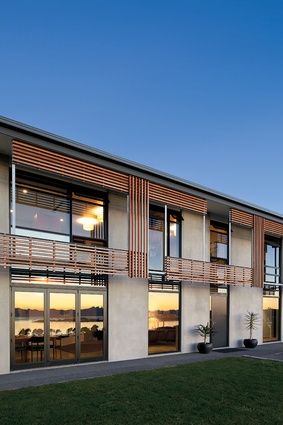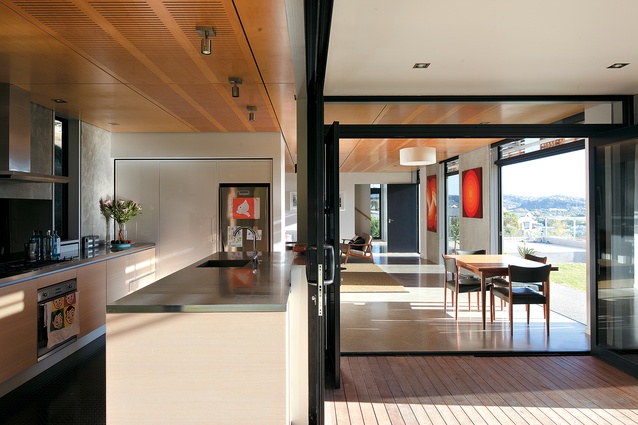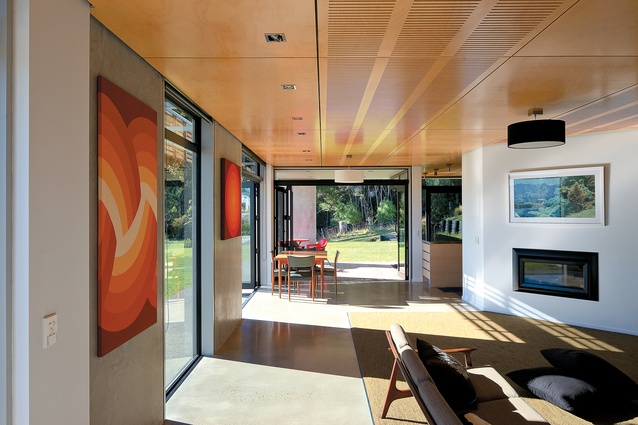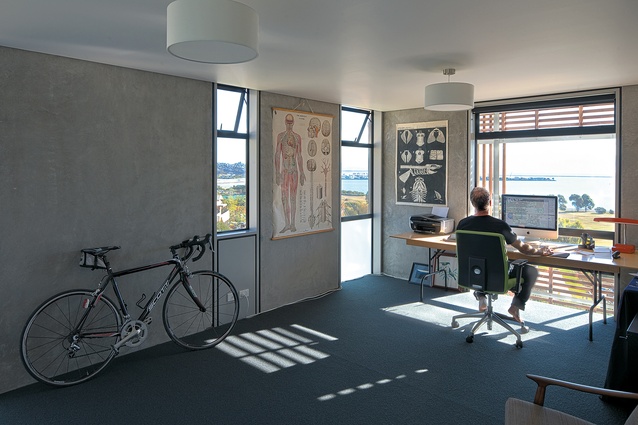Houses Revisited: Tilt Panel House
In this iteration of Houses Revisited, we look back at a house deriving from the investigation into the opportunities afforded by concrete tilt panel construction, designed by Nelson-based architect Jeremy Smith.
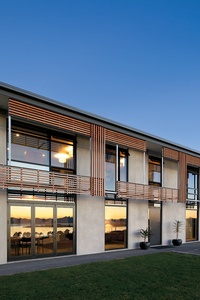
Architects often explore and exploit the boundaries emplaced by the restrictions of building, and Jeremy Smith has followed suit through the design of the Tilt Panel House. Concrete tilt panel construction, which is often a commercial approach to fabricating buildings, was used by Smith as a way to provide a durable, cost efficient and thermally sustainable solution for the four bedroom family house on a new suburban subdivision in Nelson.
The angular wrapping of the profiled steel that shapes the roof and the southeast elevation creates the house’s more interesting form. The house’s dominant structure, however, is the rectangular box determined by the construction method, which was created using two-storey preformed insulated concrete panels with glazing placed in between the sections.
While much of the sculptural form was in response to the building method, it also seems to reference both the house’s immediate and extended landscape: where immediately a dense forest reserve borders the sea; and further afield where Nelson is shaped by mountains that surround Tasman Bay.
Inside, the box shape enables a straightforward plan. On the lower level, the recent tendency to have one large rectangular open living space has been avoided through the use of a diagonal wall, while upstairs three bedrooms and an office are carefully divided (in nearly equal measures) along the northwest face.

The concrete is exposed to much of the house’s interior and its permanence is in contrast to the fitted plywood ceiling panels, the painted plaster board and the soft furnishings, which feel as though they can promptly be changed like a piece of clothing dependent on mood, owner and fashion of the time.
The temporal nature of the interior materials extends to the external timber sun-shading device that, in time, will alter through weathering or at the owners’ request. Through the art of foreshadowing, the impermanence of the timber is tangible in the present day, casting flittering shadows on internal spaces and softening the solid concrete façade.
Through the persistent investigation of a building method’s stereotypes, Smith has designed an affordable house that possesses temporal and enduring qualities.
This article first appeared in Houses magazine.



